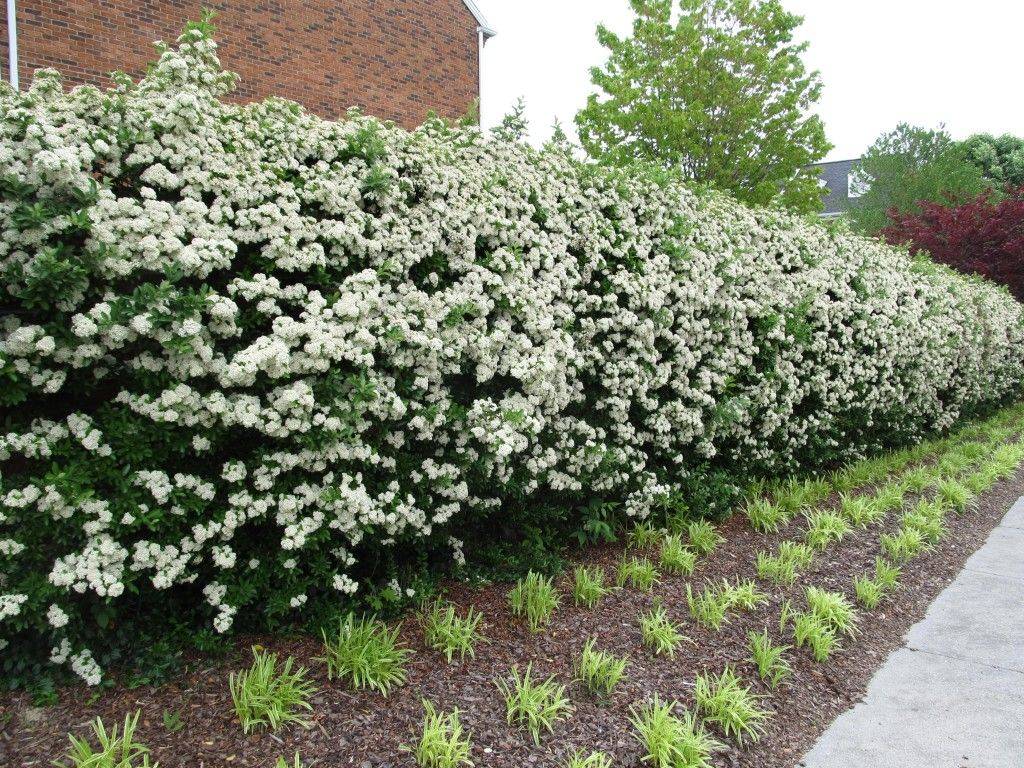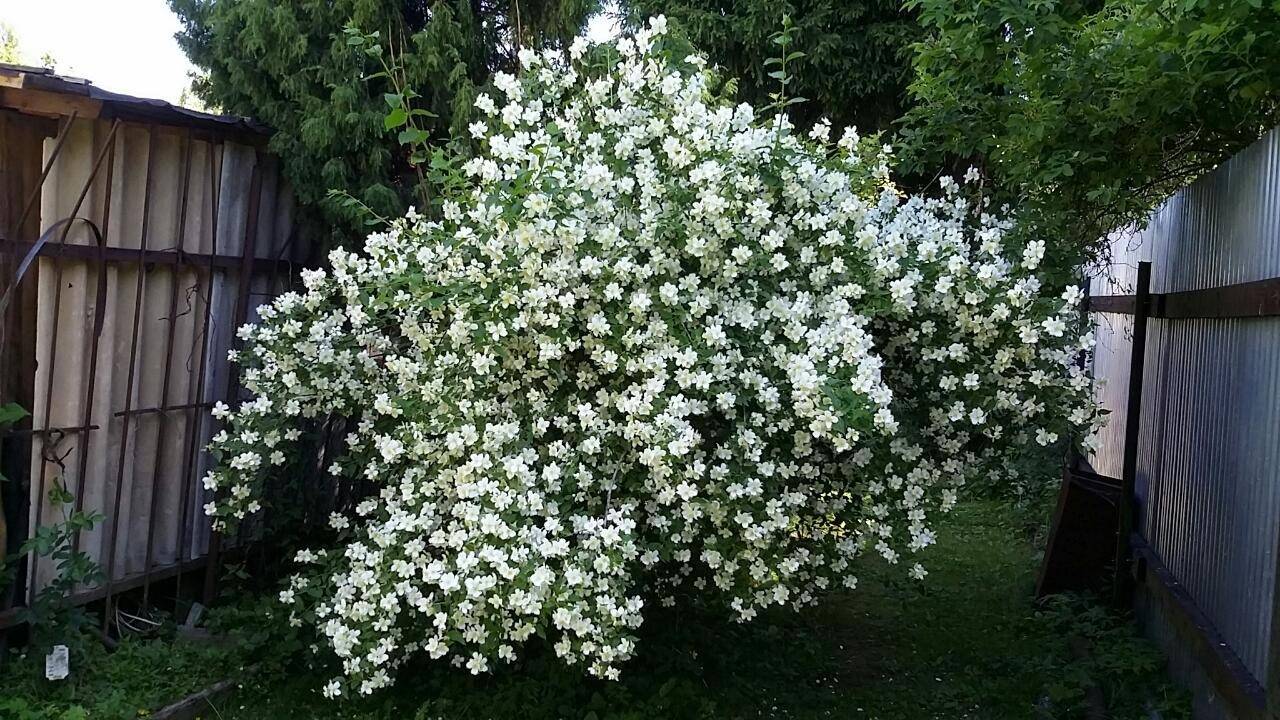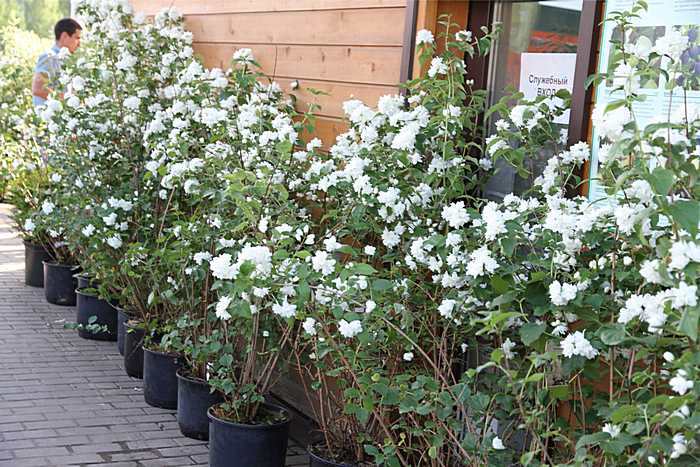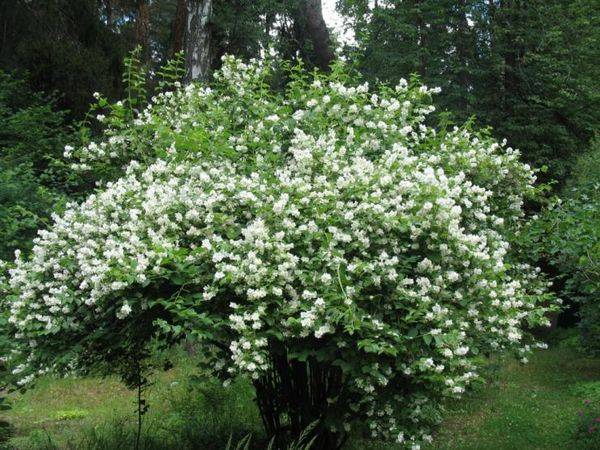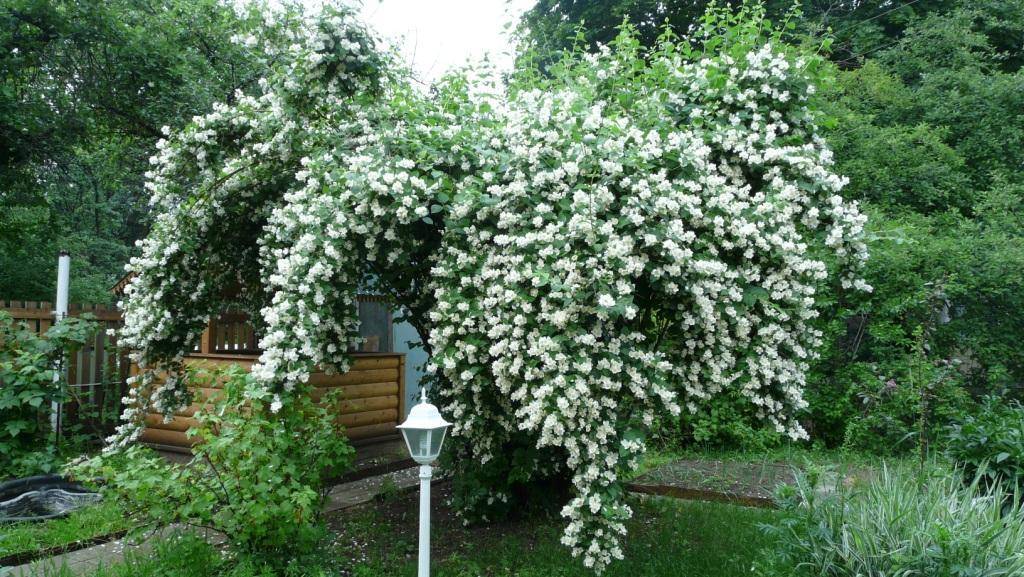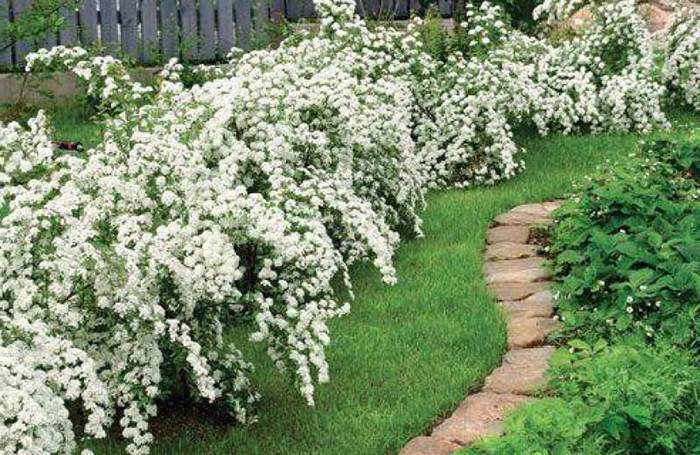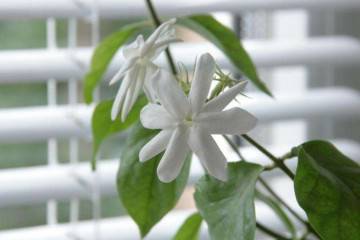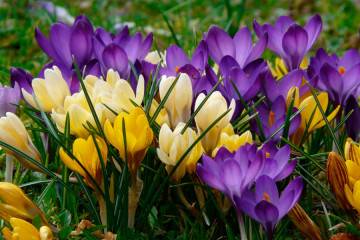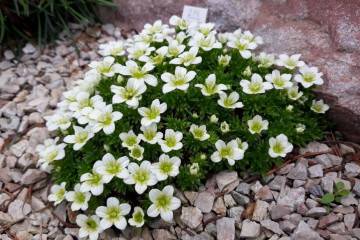Jasmine - a flower for the garden, planting and caring for a shrub
Content:
Jasmine is one of the most popular outdoor plants among florists. Jasmine bushes during the flowering period delight the owners of the site with an amazing aroma. The inflorescences are quite large, and the corolla of flowers can be colored in different tones. A perennial, with proper care, can become a real decoration of a summer cottage. Below you can find information on what jasmine looks like and the features of its cultivation. You can also find out: jasmine is a tree or shrub.
Shrub description
Jasmine is a flower that belongs to the category of climbing or erect shrubs with the presence of simple, trifoliate or pinnate leaf plates without stipules. Jasmine flowers are large in size. Flower corollas can be painted in different colors:
- white;
- pink;
- reddish;
- yellow.
In the inner part there is a pair of stamens with short filaments. The upper ovaries turn into berries after ripening. The crown of the shrub is quite lush. The plant is especially attractive during the flowering period, when the entire bush is covered with bright flowers collected in inflorescences.
The birthplace of the flower, the name of which is jasmine, is the territory of Asia, the Arabian Peninsula, the Transcaucasus and the northern regions of China. There are more than 190 varieties of perennials that grow in places where the climate of the subtropics prevails.
During flowering, a large percentage of essential oils are concentrated in the inflorescences, which have a positive effect on human health. The buds are often used to prepare decoctions that help normalize the digestive system. Essential oils help to strengthen the immune system and detoxify the body.
Types and varieties of Victor Lemoine, suitable for cultivation in Russia
Among the most popular varieties of jasmine that can be grown in Russia are:
- Mont Blanc is a shrub jasmine that is a spectacular member of the Hortensia family. If you choose the right site for planting bushes, you can grow a gorgeous plant that grows in breadth. At the same time, the height of the perennial will barely reach 200 cm. The leaf plates are painted in olive green shades. Jasmine is a shrub that retains its decorative characteristics throughout the summer. The flowers of the plant are painted in creamy white tones, which gives the impression of a similarity between the bush and the snow-capped peak of Mont Blanc. The plant is frost-resistant and moisture-loving. However, you should not allow stagnation of moisture in the area of the root system. It is recommended to make a drainage layer in each hole. The area of the trunk circle must be mulched with a layer of peat;
- Glacier is a jasmine, the height of which reaches 200 cm. The beautifully flowering shrub belongs to the category of perennial deciduous ornamental crops. The homeland of the variety is France. Terry flowers, from which an amazing aroma emanates, are large and can curl. A frost-resistant plant can survive even at a temperature of -25 ° C. An unpretentious shrub can grow on any soil.The plant tolerates a prolonged dry period and pruning procedure normally. Long-lasting and abundant flowering. The diameter of double flowers, collected in long inflorescences, reaches 30 mm. The variety is not susceptible to disease;
- The ermine mantle is a compact bush, the height of which is in the range of 100-250 cm. Long shoots gently lean towards the ground surface. During flowering, the perennial is covered with semi-double flowers, painted in white tones. The plant gives off an amazing aroma with hints of strawberries. At the end of spring, the buds begin to bloom.
Types and varieties of N.K. Vekhov - Vekhovsky chubushnik
Below you can find the most popular varieties of Vekhovsky mock-orange:
- The airborne assault is a type of chubushnik, the bushes of which do not differ much from other varieties, except that they are distinguished by their compact size, and the leaf plates are painted bright green. Chubushnik can grow up to 200 cm in height. Oval foliage fully covers the plant, which is distinguished by its unpretentiousness. Long-term flowering can be observed even when the variety is grown in shaded areas. Erect shoots are quite flexible and amaze flower growers with plasticity. A unique aroma with hints of strawberries fills the garden. The flowering of the variety is quite abundant and long-lasting, if the gardener knows how to properly care for the perennial;
- Snowstorm is a jasmine tree that can beautify the garden area effectively. A bright perennial appeared as a result of the painstaking work of domestic breeders. The variety is endowed with a compact form. Landscape designers often use a mock-orange when landscaping the area around the house. Snowstorms are often planted along the lawn grass. The root system is distinguished by its power and branching, which allows the plant to adapt to various climatic conditions and grow on any soil;
- Zoya Kosmodemyanskaya is a tall type of shrub that, with proper care, will delight the owner with its lush flowering for at least 35 years. The height of a deciduous ornamental bush can exceed 280 cm. The shoots of the chubushnik are erect and numerous. The grayish bark forms a spherical crown. Petiole foliage is naturally endowed with oval outlines. Large semi-double flowers are painted in snow-white shades and are collected in racemose inflorescences. The seed boxes are the fruits of the plant;
- Unusual jasmine is a bush whose height reaches 50 cm. A significant advantage is the unpretentiousness of a variety that has useful properties, and a pronounced aroma that comes from the bush during the flowering period. It is important to systematically water the bushes and apply fertilizers, which will make it possible to achieve abundant flowering.
Jasmine shrub: planting and care
How to plant jasmine at home so that the bushes grow healthy and delight with abundant flowering? The planting process for different types of jasmine is practically the same. When choosing a place for planting seedlings, it is worth giving preference to areas that are protected from drafts. Otherwise, abundant flowering can not be expected. Also, the landing site should be well lit by the sun's rays.
Step-by-step planting process:
- A layer of sand mixed with small stones is poured into the holes prepared for planting. The sandy-stony layer is capable of performing the functions of a drainage system.
- It is also worth pouring 45 g of nitrophosphate into the planting groove, which will speed up the process of plant survival in a new place.
- The root system of the seedling is leveled and deepened into the hole. The resulting voids are covered with earth.
- After planting the bush, it is necessary to compact the soil in the area of the periosteal circle.
- The soil at the planting site is abundantly moistened.
Jasmine propagation
Jasmine can reproduce in two ways:
- by the seed method;
- by cuttings.
How to propagate jasmine with seed? To use the first method, it is worth placing flower seeds in a cloth bag and immersing it in a glass of warm water for a couple of hours. After that, the seeds are dried and mixed with a small amount of sand. At the end of March, you can start sowing them. To do this, you will need to prepare a spacious container and fill it with moist peat mixed with a small amount of sawdust, compost, and leafy soil. Seeds are sown on the surface of the soil and covered with a layer of earth. The earth is moistened with a spray bottle, the container is covered with a film material. The film must be opened daily for 10-15 minutes. for the purpose of ventilation, and the soil is moistened as necessary.
Jasmine shrub is a flower that needs systematic watering. Also, do not forget about the need for picking, which is carried out during the period when 3 or 4 leaves are formed on the seedlings. In late spring, you will need to transplant seedlings into open ground. In the middle of autumn, the ground under the bush is mulched with a layer of peat, the thickness of which should reach 10 cm, which will avoid freezing in winter.
To use the grafting method, you will need to prepare cuttings and plant them in a spacious container filled with a substrate, which includes river sand and peat. The container is covered with a film material and transferred to a warm room, the temperature in which reaches 24-25 ° C. After rooting, the cuttings can be planted in separate containers, which are filled with an acidic substrate, consisting of:
- sheet soil;
- coniferous soil;
- peat and a little sand.
Chubushnik can grow in ordinary fertile soil. The root system in most species forms rather slowly. That is why do not forget about the need to process the cuttings before planting with a small amount of heteroauxin.
Jasmine Garden Care
Below you can familiarize yourself with the features of caring for jasmine (mock orange). Experts in the field of floriculture recommend that when growing jasmine, do not forget about the need:
- systematically moisten the soil to keep the soil slightly moist. In the cold season, the frequency of watering is reduced. Stagnation of moisture in the area of the root system should be avoided. For irrigation, settled rain or boiled water at room temperature is suitable;
- regularly apply top dressing. At the end of April, it is advisable to apply fertilizers to the soil like nitrophoska. During the growing season, every 2-3 weeks, the chubushnik bushes need to be fed with natural fertilizer - manure, which is mixed with water in a ratio of 1:10. To feed each plant, 10-18 liters of fertilizer will be required. Also, jasmine needs mineral feeding, for which you will need to mix a small amount of urea, potassium sulfate and superphosphate. After the listed components are diluted in water, it will be necessary to water the jasmine bushes abundantly with the resulting solution;
- carry out pruning, allowing you to maintain the desired shape and grooming of the crown. Gardeners recommend formative pruning every spring.Long shoots are trimmed completely, while short ones are only slightly trimmed. To achieve abundant flowering, anti-aging pruning will be required. To this end, the grower must remove empty shoots, and cut the central trunk by 45-55 cm. The remaining branches are shortened, damaged shoots or those affected by the disease are removed without regret;
- prepare the bushes for the winter cold. This is an important step in the care of flowers, which helps to prevent the frostbite from freezing. Despite the frost resistance of jasmine, experts still recommend not to leave the bushes uncovered for the winter. This is especially true of terry jasmine. After flowering, the shoots of garden jasmine are pressed against the surface of the soil and covered with a layer of straw, the thickness of which should be within 15-20 cm. A spandbond is stretched over the straw, which should be fixed along the edges with bricks so that gusts of wind do not blow off the covering material.
Adhering to the useful recommendations described in the article, you can grow a chubushnik healthy and prevent the defeat of the bush with various diseases. Soon, the gardener will be able to admire how the jasmine blooms.
